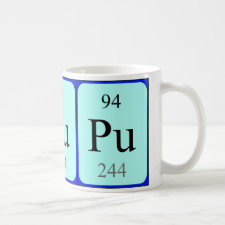
Authors: Azab HA, Duerkop A, Anwar ZM, Hussein BHM, Rizk MA, Amin T
Article Title: Luminescence recognition of different organophosphorus pesticides by the luminescent Eu(III)-pyridine-2,6-dicarboxylic acid probe.
Publication date: 2013
Journal: Analytica Chimica Acta
Volume: 759
Page numbers: 81-91.
DOI: 10.1016/j.aca.2012.10.045
Abstract: Luminescence quenching of a novel long lived Eu(III)G혀pyridine-2,6-dicarboxylic acid probe of 1:2 stoichiometric ratio has been studied in 0.10 volume fraction ethanolG혀water mixture at pH 7.5 (HEPES buffer) in the presence of the organophosphorus pesticides chlorfenvinphos (P1), malathion (P2), azinphos (P3), and paraxon ethyl (P4). The luminescence intensity of Eu(III)G혀(PDCA)2 probe decreases as the concentration of the pesticide increases. It was observed that the quenching due to P3 and P4 proceeds via both diffusional and static quenching processes. Direct methods for the determination of the pesticides under investigation have been developed using the luminescence quenching of Eu(III)G혀pyridine-2,6-dicarboxylic acid probe in solution. The linear range for determination of the selected pesticides is 1.0G혀35.0 μM. The detection limits were 0.24G혀0.55 μM for P3, P4, and P1 and 2.5 μM for P2, respectively. The binding constants (K), and thermodynamic parameters of the OPs with Eu(III)G혀(PDCA)2 were evaluated. Positive and negative values of entropy (Δ S) and enthalpy (Δ H) changes for Eu(III)G혀(PDCA)2G혀P1 ternary complex were calculated. As the waters in this study do not contain the above mentioned OPs over the limit detectable by the method, a recovery study was carried out after the addition of the adequate amounts of the organophosphorus pesticides under investigation
Template and target information: organophosphorus pesticides, chlorfenvinphos, P1, malathion, P2, azinphos, P3, paraxon ethyl, P4
Author keywords: europium, Pyridine-2,6-dicarboxylic acid, Organophosphorus pesticides chlorfenvinphos,malathion,azinphos,and paraxon ethyl, Analytical detection, Luminescence quenching, thermodynamic parameters



Join the Society for Molecular Imprinting

New items RSS feed
Sign-up for e-mail updates:
Choose between receiving an occasional newsletter or more frequent e-mail alerts.
Click here to go to the sign-up page.
Is your name elemental or peptidic? Enter your name and find out by clicking either of the buttons below!
Other products you may like:
 MIPdatabase
MIPdatabase









